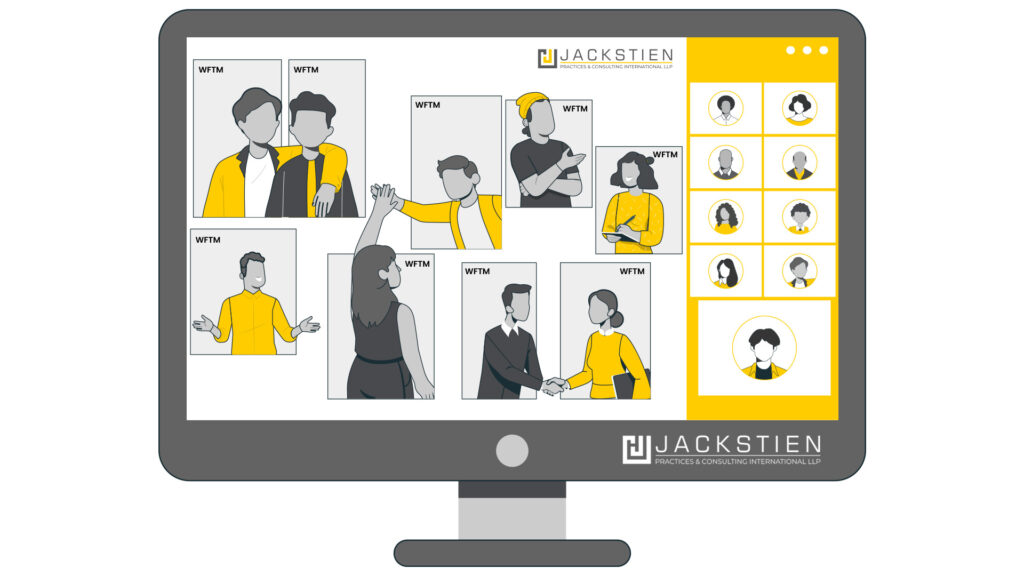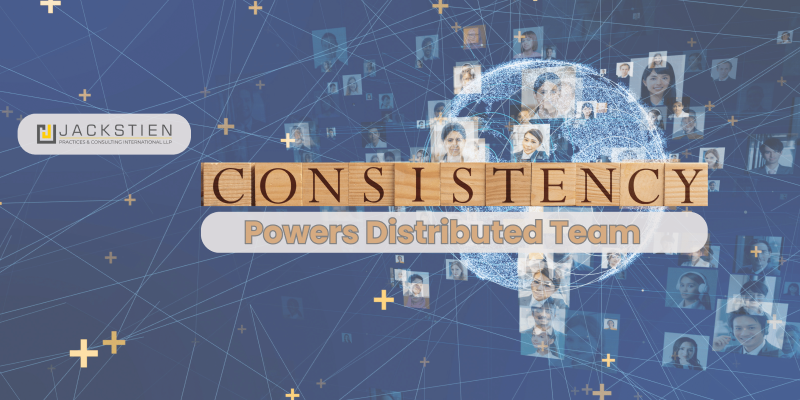Employee engagement strategies of old just don’t compute.
As organizations adjust to this flexible model, it’s essential not to confuse traditional engagement strategies with those designed specifically for a hybrid setup. Let’s delve into practical tips and strategies to maintain high levels of employee engagement and connectivity in this ever-evolving work environment.
Work-Free Team Meetings for Hybrid Work Structures:

Traditional team meetings often struggle to accommodate the diverse schedules and preferences of a hybrid work setup. Engaging work-free team meetings step into the spotlight by providing a flexible structure that aligns with individual work rhythms. In this approach, team members have the autonomy to choose when and how they engage, fostering a culture that values individual contributions and respects the varied commitments of each team member. The result is not only improved attendance but also heightened engagement during meetings. When individuals have the freedom to participate when they are most energized and focused, the collaborative atmosphere becomes more vibrant, leading to richer discussions and increased team morale.
Hybrid Work and Virtual Team Activity Management Systems (V-TAMS):

In the dispersed landscape of hybrid work, maintaining engagement requires effective task and activity management. Virtual Team Activity Management Systems (V-TAMS) step in as essential tools, streamlining collaboration in virtual and hybrid settings. Providing a digital haven for centralized task management, communication, and project tracking, V-TAMS act as catalysts for improved team cohesion. To enhance your team’s proficiency in V-TAMS, consider exploring the SAPIENS training program, equipping your workforce with the skills to navigate and thrive in the future of collaborative work. From fostering real-time collaboration to reducing communication barriers, V-TAMS, combined with targeted training, contribute to a more engaged, aligned, and connected team, even in the absence of physical proximity.
Visible Leadership Engagement Across Platforms:
Leaders are encouraged to actively engage in both virtual and in-person interactions, showcasing a steadfast commitment to open communication and transparency. By participating actively in these settings, leaders not only demonstrate their accessibility but also underscore their dedication to maintaining a connected and engaged workforce. To bolster engagement further, leaders should consistently share valuable insights, real-time updates, and the overarching vision of the organization through a variety of channels. This multi-channel approach serves to reinforce a shared sense of purpose among team members. Whether through virtual town hall meetings, interactive online platforms, or in-person gatherings, leadership visibility acts as a powerful catalyst for building trust, cultivating a collaborative environment, and promoting a unified organizational culture.
Digital Social Hubs for Hybrid Work:
As traditional water cooler conversations have transitioned into virtual realms, the fundamental need for social connection has evolved. To bridge the social gap in the world of hybrid work, consider establishing digital hubs on collaboration platforms. These hubs serve as virtual spaces designed for casual conversations, team-building activities, and non-work-related interactions. In the context of hybrid work, where physical distances may pose challenges to spontaneous interactions, these digital social hubs act as connectors. They play a vital role in maintaining the social fabric of the team by providing a platform for individuals to express their personalities beyond work tasks. This contributes to building stronger interpersonal relationships, enhancing the overall sense of unity and collaboration within the team. In addition to fostering a positive team culture, these digital hubs serve as catalysts for creative thinking and idea generation.
Addressing Proximity Bias in a Hybrid Work Setting:
As organizations adopt hybrid work models, addressing proximity bias through targeted manager training is crucial. Proximity bias, favoring physically present employees over remote workers, can hinder career opportunities. Training sessions raise awareness of this bias, provide strategies for objective performance evaluation regardless of location, and promote inclusive practices. Guarding against proximity bias ensures equal opportunities for all team members, fostering a more inclusive and equitable work environment.
In the hybrid work future, engagement strategies must adapt to the unique challenges and opportunities presented by this evolving landscape. By embracing clear communication, work-free meetings, digital social hubs, and engagement with V-TAMS, organizations can foster a connected and engaged workforce, regardless of where team members are located. Additionally, elevate your team’s preparedness with the SAPIENS training program – the ONLY comprehensive solution crafted for remote, hybrid, and distributed teams. Developed with precision, SAPIENS addresses every challenge faced by organizations and individuals, ensuring that as we navigate this new frontier, success comes from a tailored approach to the specific needs of the hybrid work environment.


